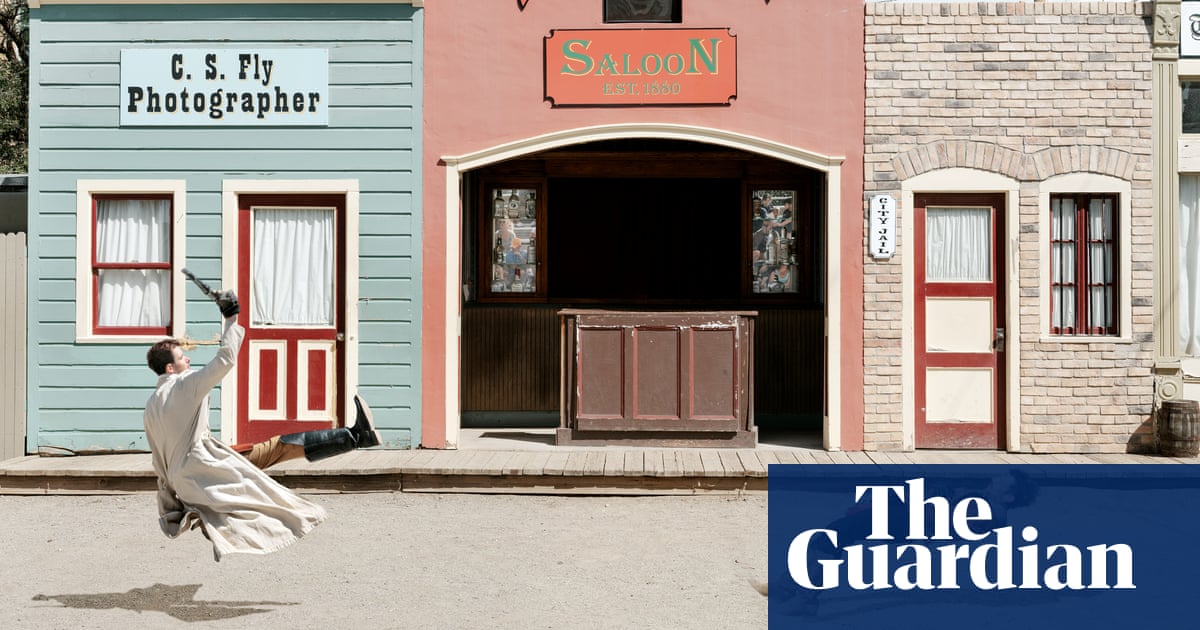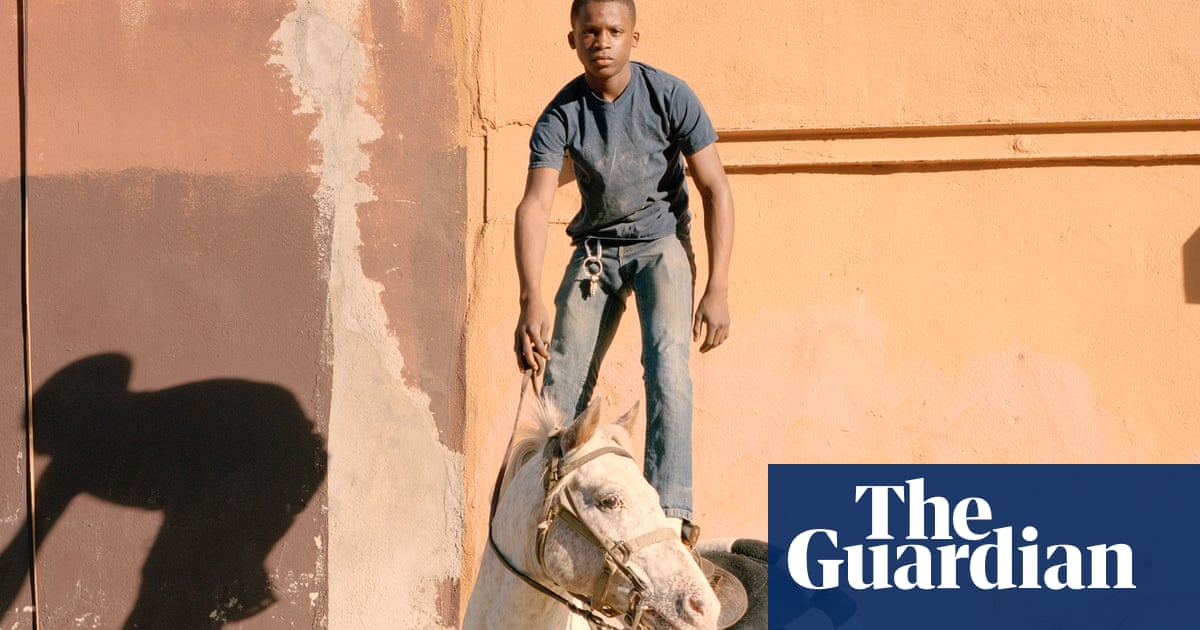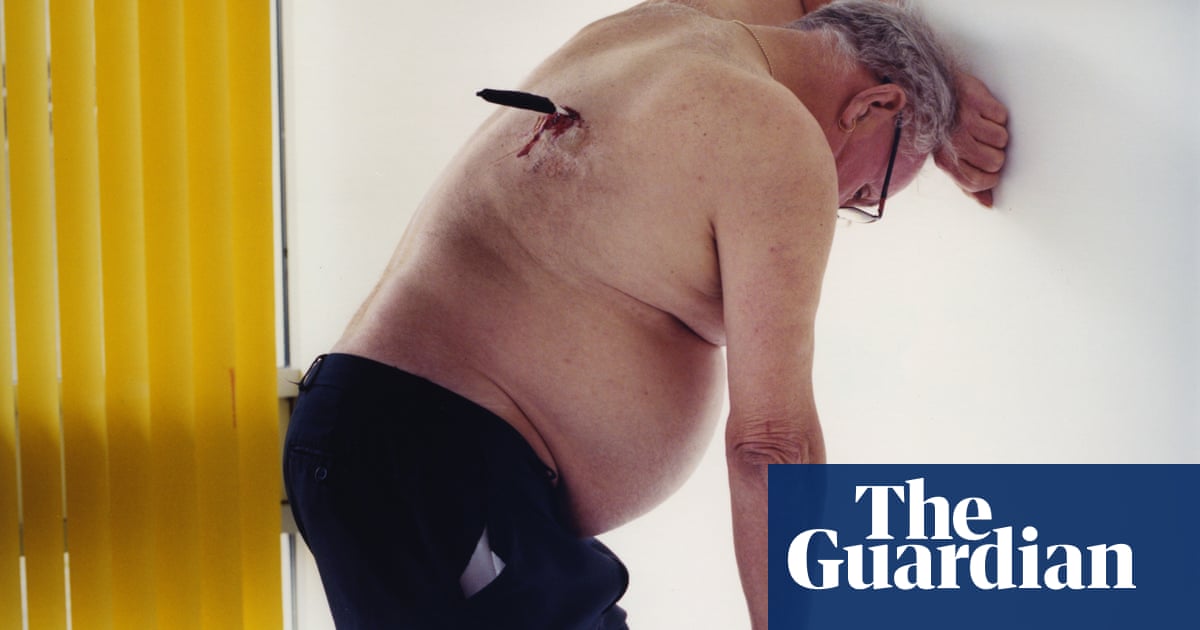
he ease with which my photographing Lowry was arranged was nothing short of remarkable. I’d always admired his work and what I had read about him intrigued me. That’s why in 1975, when I heard the Royal Academy was planning a show of his paintings, on a whim I asked a young woman involved in the exhibition whether it might be possible to photograph him. She told me it shouldn’t be a problem, and a week later she and I were off to Salford on the train.
I don’t remember much about Lowry’s home. From the outside, the house itself was unremarkable; once inside, though, it felt a little stranger. The entrance was dark, with a collection of grandfather clocks consuming his hallway. I wasn’t invited further in.
My approach to photography is simple. I arrived with only a single light and a variety of different plugs for emergencies. The sockets in the house, however, were like none I’d ever encountered. The surprised owner of an electrical store nearby informed me that these types of sockets were decades out of manufacture, although by fluke he happened to have a plug lying around that I was able to use.
After the wretched plug debacle, getting the right shot only took half an hour. Thinking back, it seems odd that I didn’t ask to photograph the man in his studio, but there was just something so intriguing about his hall.
I shot in black and white; to this day it is my preference. With colour film back then, a mixture of lights rarely looked right. Either the daylight would look too blue, or the natural light too yellow. I’d have had to put blue gels on the light bulbs, which was a bore. Black and white photographs have a more abstract quality that lasts longer. I’d never want a colour portrait on my wall. It tells too much, but in the wrong sort of way. It’s much easier to fool people with pretty colours.
I was always very nervous when photographing people. I worried my subject would be frightfully bored, and I never felt confident that it was going to turn out well. On that day my nerves were not helped by the fact my subject wasn’t too keen on keeping still. “You’re killing me, killing me you know,” he moaned. “Well, come on, Mr Lowry, you always say you want to die,” my companion would respond, making sure he behaved himself.
He didn’t need much direction from me – he just looked perfect natural. That said, I’m not sure that at that stage in my career I would have had the guts to tell him what to do or how to stand.
Lowry took us to lunch at a hotel where he was a regular customer. I wish I could remember what we talked about, but my sole recollection is of being fascinated by the sheer quantity of roast lamb and potatoes he consumed.
I’m sceptical of theory. The mechanics of photography are not difficult; what matters is training the eye. In my 20s, I attended Oskar Kokoschka’s School of Seeing at the Hohensalzburg Fortress in Salzburg. Learning about light, movement and space was a revelation. I spent several summers painting watercolour after watercolour at the school. Kokoschka made his students learn through helping them discover how to see.
Bill Brandt was also responsible for shaping my thinking that, aside from some elementary skills, photography isn’t about fixed rules, but about training the eye. In 1970, I bought his book A Night in London. When I went to collect it from his studio, I asked to be his assistant. No, he said, he didn’t have assistants. Instead, we met for lessons once every few months. That continued until he died.
In 1976, I was in Bombay and saw a poster for an exhibition of Lowry’s and my host told me he had recently died. I imagine mine was one of the last portraits taken of him.
Almost 50 years have passed since I started photographing professionally, and I still can’t tell you exactly why this image is one of the ones I’m most proud of. I don’t think photography should be an academic discipline. If you can return to an image again and again and continue to enjoy it, I see no reason to interrogate that further. It’s a curious image, which reflects Lowry’s curious character. Why make it any more complicated?
• American Gardens by Monty Don and Derry Moore is published by Prestel on 23 September.
Derry Moore’s CV
Born: London, 1937.
Training: Kokoshka’s School of Seeing.
Influences: Eugène Atget, Bill Brandt.
High point: “My first time photographing in India, in 1976. I Immediately felt I’d been there in a previous life.”
Low point: “On my first shoot for Tatler, 100 miles into our drive north, I turned to the editor sitting next to me and awkwardly explained I’d forgotten my camera.”
Top tip: “Doing window displays is far more useful training than going to photography school.”












